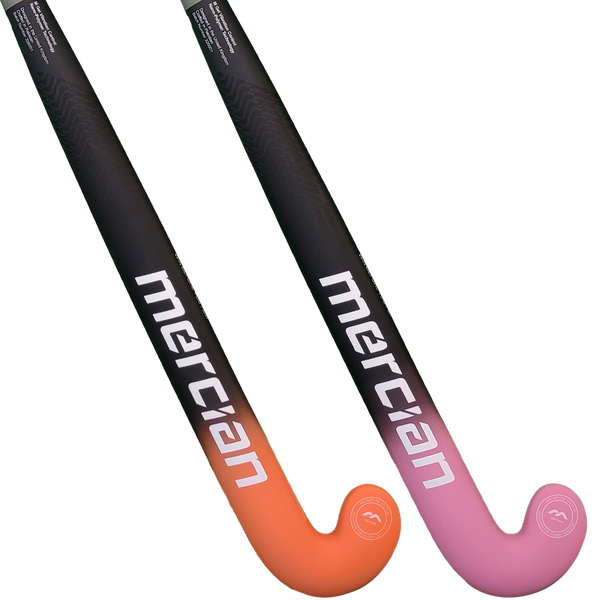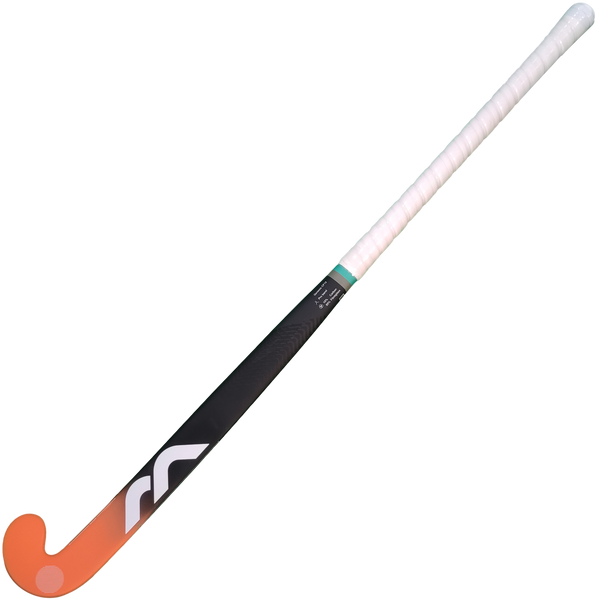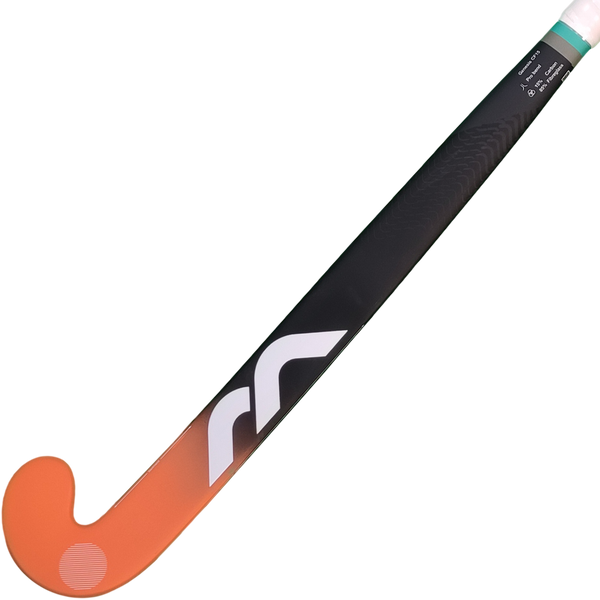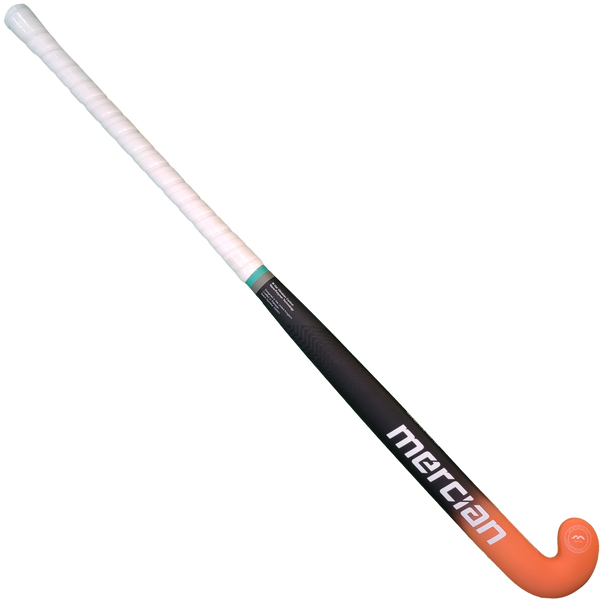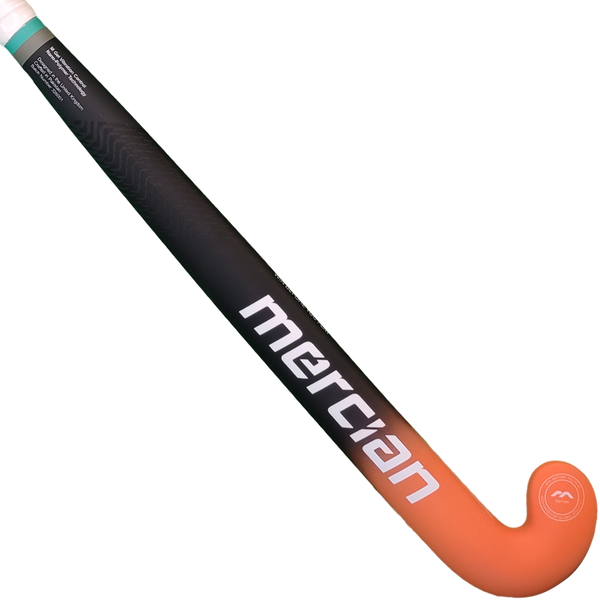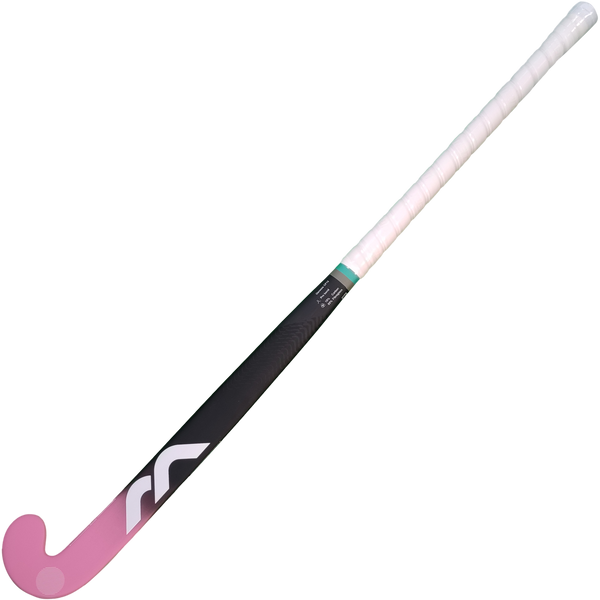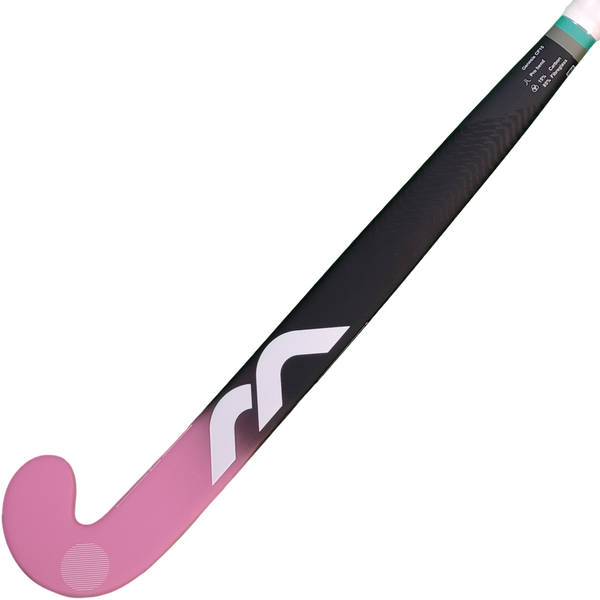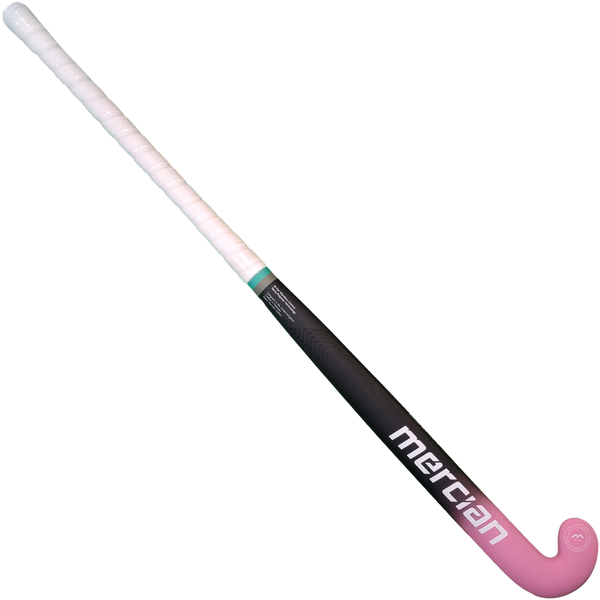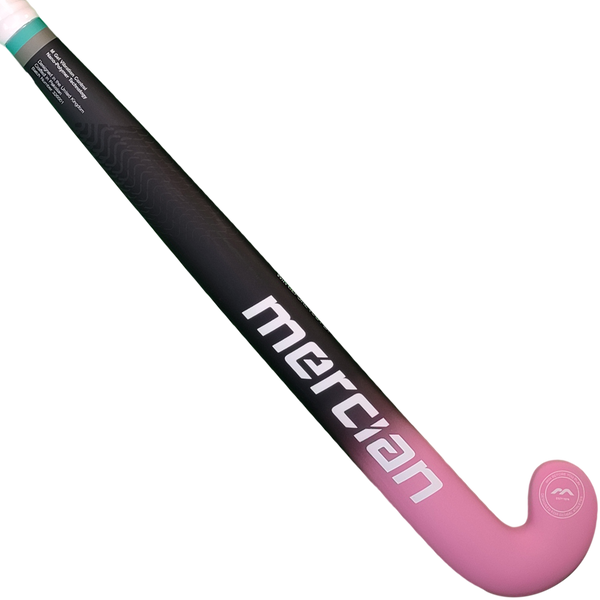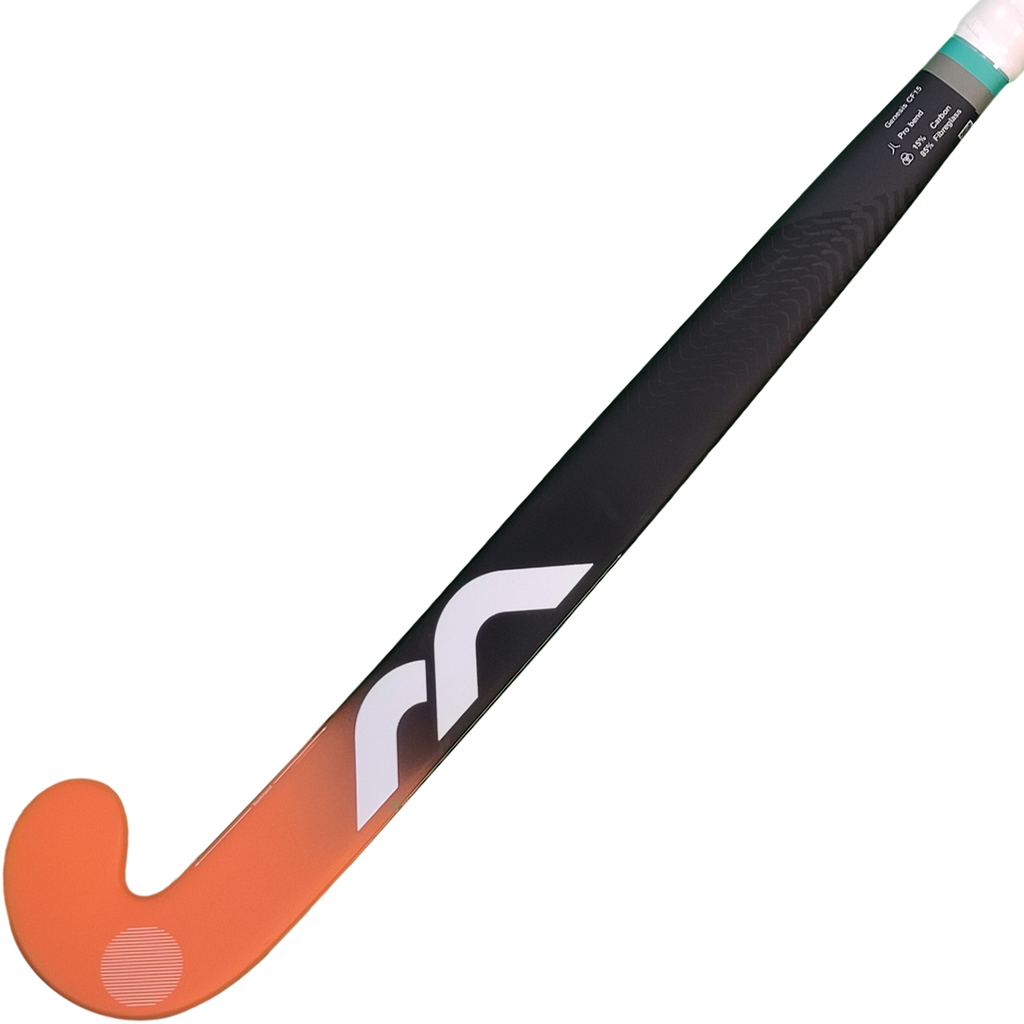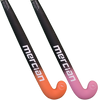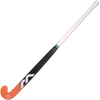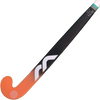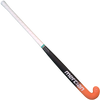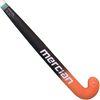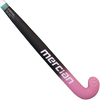Genesis CF15 (2023)
- Description
- Technical Details
- Player Profile
The Genesis CF15 is a 15% carbon entry level composite stick with specifically placed carbon inserts to provide good levels of stiffness and durability and strength in specific areas. The underlying fibreglass lay-up and advanced resins enhance durability despite the lightweight pick-up and therefore aid skill execution.
- 15% Carbon in specifically placed inserts.
- Pro (low) bend (24mm @ 230mm) for senior lengths, 22mm standard bend for junior lengths.
- M-Gel vibration control.
- Kevlar (Aramid) durability.
- Fibreglass Micro-skeleton and laminates.
PRO BEND
The Mercian Pro Bend incorporates a near maximum 23.5mm bow positioned just below the mid-point of the shaft, approximately 250mm from the bottom of the stick. The shaft has then been shaped to give a thinner profile under the right hand and a balance point that favours the head end of the stick. This gives a combination of great stick turn-over due to the shape but enhanced hitting power because of the balance point and sweet spot, the hitting power is also enhanced because the head is 1.5mm thicker than the ultimate bend.
Standard Bend
The Standard Bend that you find in the 30” – 35” Genesis CF5 models in this year’s Mercian Range have a 23.5mm bow with the maximum bend positioned at the mid to low-point of the shaft. The balance point has been moved up the stick towards the handle to enhance the key playing characteristics of these sticks – the higher balance point means less head weight, an easier turn-over and therefore assists skill execution. The new shaft shape, head shape and shaft thickness improve the pick-up and balance of the shorter lengths, whilst the 36.5 is made in the Pro bend mould.
CARBON FIBRE – CF15 – 15% Carbon
One of the most common questions asked by the consumer is ‘how much carbon?’ with the perception that more is better. That is far from the truth, so to shed a little light. Firstly, the quality of carbon (manufacturing point) is important. Toray (Japanese) Carbon is often considered the best, but Carbon from Germany, Scotland and South Africa (to name a few) are all high-quality. Sticks are usually made in Pakistan and most major brands will import Carbon into Pakistan to make sticks. Local made carbon is not usually as good. But it is difficult to know if a brand uses imported carbon. The number of filaments in the carbon fibre is relevant, 1K, 3K etc relate to the number of filaments of pure carbon within a fibre or ‘tow’. 1K is used in aeronautical industry and electronics. 3K and 6K are commonly used in sport as they have the right combination of weight and strength. Anything over 6K is very dense and too heavy for sports equipment. Again, this isn’t a common line of questioning from the consumer but may come up. Carbon fibres are a straight-line material and so provide stiffness in a single direction. To provide stiffness in multiple directions the fibre can be woven into a multi-directional sheet (seen as an obvious weave in the sticks surface) or single direction sheets can be layered over each other to create the multi-directional stiffness. 40% of the weight of a composite stick comes from the resin within it. So a stick can’t be 100% carbon. However, it can be claimed that 100% of the composite materials in a stick are carbon. Mercian do not believe this gives optimal strength and so always combine the carbon overlay with a composite micro-skeleton made from fibreglass, Kevlar (aramid) and basalt. Carbon is stiff but brittle. The stiffness means that the energy created by the player when striking the ball – hit / slap – transfers to the ball and is not absorbed by the stick. Maximum energy transfer allowed by the FIH is 98%. But this stiffness means that the stick will not absorb energy on trapping / receiving so needs soft hands! The brittleness of carbon means that if the fibres are broken (stick tackle / post impact) they will crack and the stick can or will fail. This is not a manufacturing fault. Other materials can be used in conjunction with carbon to get a positive performance outcome. Special chemicals are used with paints and lacquers to get them to bend to the top layer of carbon and create high-quality graphics.
COLD SATIN LACQUER
The final coating applied to a stick is usually purely for cosmetic reasons. The Cold Satin Lacquer applied to the Evolution models actually feels different under a player's touch, increasing awareness of temperature and giving the impression of reduced friction for dribbling and stick turn-over.
NANO-POLYMER RESIN
The particles within our resins have been altered at a nano-size level (10 x below microscopic) Instead of using nano-carbon particles, the use of rubberized polymers creates a more flexible but stronger bond between the composite layers. This increases the stiffness of the sticks and reduces de-lamination.
FIBREGLASS – CF15 – 85% FIBREGLASS
The basic synthetic material that makes the initial micro-skeleton in all Mercian composite sticks. Simple fibreglass stands, dipped in custom resins and then woven into sheets to be combined with other materials to create the combinations relative to the specific stick’s performance.
M-GEL
Creation of perfectly balanced sticks is based on experienced craftsmen, handling the highest quality raw materials and then balancing the final product with the introduction of specific, measured amounts of silicon rubber inside the shaft. This rubber coating, applied at the base of the handle provides a damping effect, reducing vibrations. It is inserted using a long needle and creates a specifically placed rubber layer.
- 15% carbon stick with Pro (low) bend in 36.5 and 37.5 variations.
- This helps with lifting the ball (short overhead passes and 3D skills) but the head weighting also aids hitting, slapping and ball control.
- The standard bend in the shorter length means the stick face is more in line with the handle and therefore aids passing accuracy.










